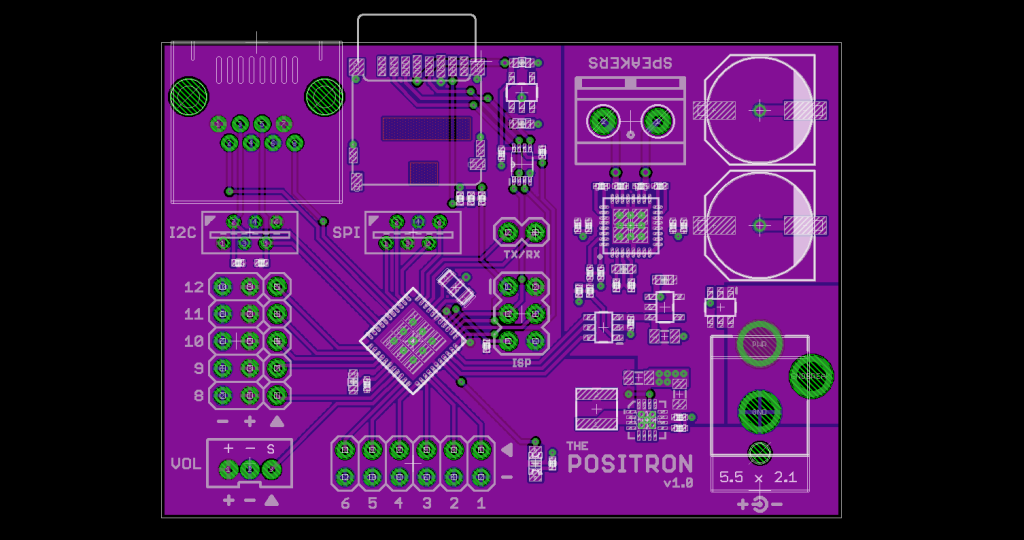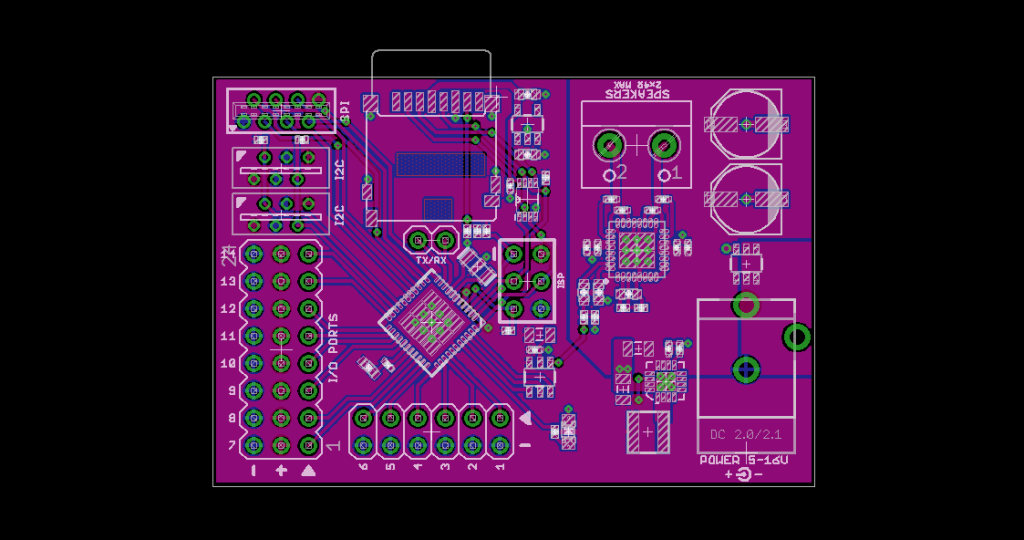Thought you guys would like to see the latest and near-final layout for the Positron’s PCB!

As you can see, a lot has changed since the first prototype:

Among other changes, the audio system has been overhauled, with a dedicated high PSRR regulator for the DAC to keep noise in the system to an absolute minimum.
In layman’s terms, a Digital to Analog Converter converts digital data to an analog audio signal for the amplifier. And that DAC is supplied with 5V from a linear regulator from the 12-14.4V primary supply. This regulator has a high Power Supply Rejection Ratio which means that any voltage swings on the 12V supply will be reduced by a factor of 100 before reaching the audio system.
You may also have noticed the board has increased in size. The original was 2.25×1.5″. The final board will be 2.5×1.75″. I needed the extra room for the Cat5 cable connector, but that allowed me room to improve the routing, increase the size of the bulk capacitors, and add a dedicated connector for the volume control. I also beefed up the power connector slightly.
The I2C connector pictured above is where you will connect the Flat Flex Cable for the powercell (or bargraph on the eventual trap kit). Directly above it is the Cat5 cable connector which goes to the thrower and the modules in there.
The SPI connector in the center won’t be populated, it’s for future expansion. In the trap kit, it will be used to drive a color changing strobe if desired. The ISP and TX/RX connectors also will not be populated, they are for programming and debugging. I am undecided if ports 1-6 will be populated. They are for switches and I currently have no plans for any feature which would require adding switches to the pack itself. All the switches for controlling things will be in the thrower, aside from the main power switch, and optionally, the volume pot.
Ports 8-12 will be populated of course, with their primary purpose being triggering the relays on a fog machine upgrade. They will also trigger when different weapons are activated.
While I’m listing features, I may as well mention just in case you’re unaware that there’s a 20+20W amplifier on board which is capable of driving 40W total into two speakers with a 12V supply. That’s 4x what other kits can supply, and it’s as loud as the Lepai amplifiers that were often used with my previous kit. The smaller Dayton amplifiers that were also often used with my old kits were 15+15W.
